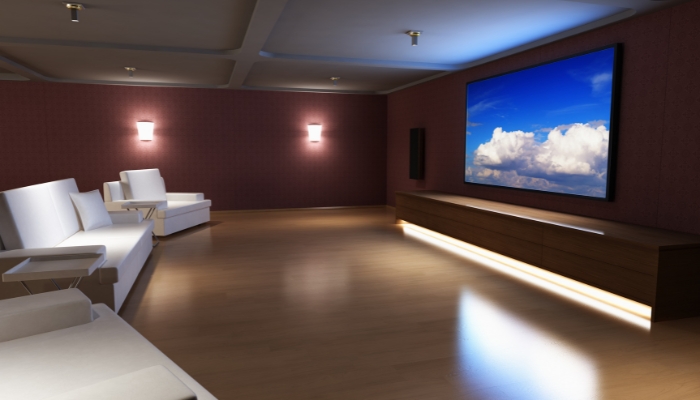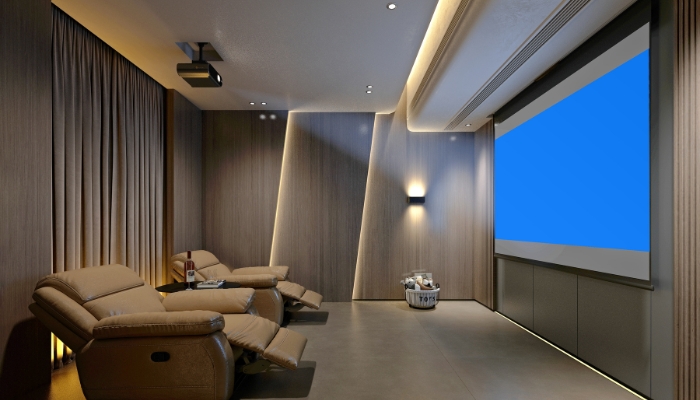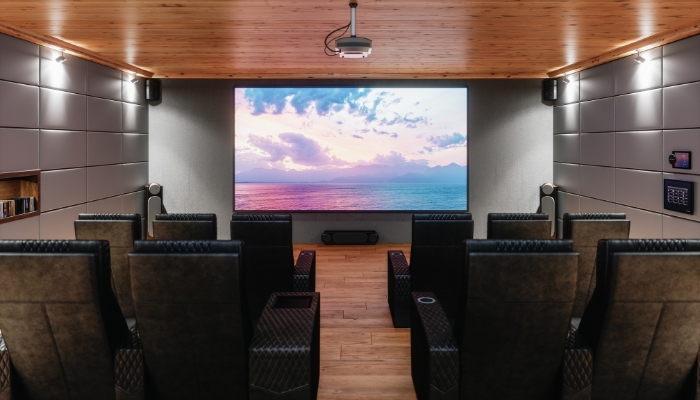In part one of this two-part blog series, we looked at some basic factors that often play a role in deciding on the size of a home theater screen. There are a wide range of common home theater screen sizes, plus many custom options available, and there might be a few different variables that factor into your decision if you're installing a new home theater.
At AVI Systems, we're proud to offer a variety of home automation and entertainment products and services to clients around Salt Lake City and Draper, including comprehensive home theater and media room solutions. Today's part two of our series will look at some additional variables that may impact your decision on home theater screen size.
Angle Considerations

While we went over things like viewing distance and room size in part one, another factor to consider is the angle of your seating. This is an important consideration because you want all viewers in the room to have a good viewing experience, and you don't want those who are seated at an angle to have their view obstructed by seats or other furniture.
You may need to go with a larger screen size if there's going to be any kind of seating at an angle in the home theater space. This is because a larger screen ensures that everyone can see most or all of the image from any position in the room, no matter how far away they are sitting or what angle their line of sight is coming from.
Lighting/Ambient Lighting

Ambient lighting and other types of lighting can also be a factor in deciding on screen size. If you're placing the home theater in a room with windows and other sources of natural light, it could make sense to go with a larger screen so that it can be easily seen even when there's direct sunlight coming into the room.
Likewise, ambient lighting may also play an important role. A darker environment often requires a larger screen size, as the image needs to be bright enough to compete with the darkness of the room. If your home theater is going to be in a room with lots of light and windows, you may want to go bigger if possible.
Aspect Ratio and Resolution

Finally, a couple technical elements to consider when it comes to deciding on a screen size for your home theater are aspect ratio and resolution. Different formats require different types of screens, so you'll want to make sure you choose the right size for the type of content you plan on watching.
If you're planning on watching movies from different sources, such as Netflix or Blu-ray discs, you may want to opt for a larger screen size so that you can enjoy all of the extra details and nuances of the movie. The same goes for TV shows, video games, and other content sources; bigger is often better when it comes to enjoying the full picture of what's being watched.
When it comes down to it, deciding on a home theater screen size is often an individualized process. Taking into account a few factors, such as the size of your room, viewing distance, angle of seating, lighting, aspect ratio, and resolution, can all help you make the best decision for your specific needs.
At AVI Systems, we're proud to offer comprehensive home theater design and installation services that look at all of these factors. Contact us today to learn more about these or any of our home automation solutions!